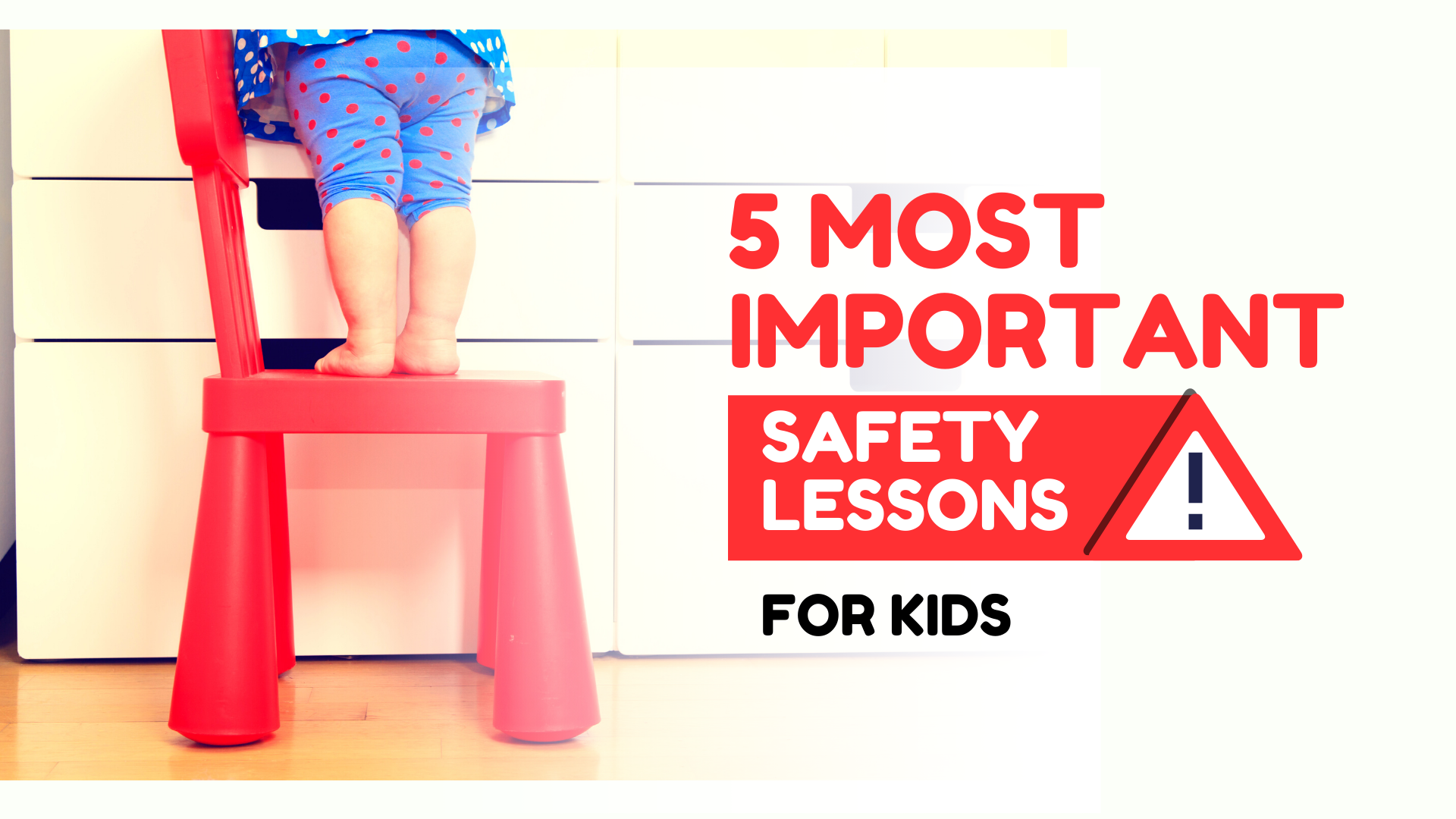
Do you get shivers in the name of leaving your child alone at school or with friends? Are you worried that your kid isn't aware of the safety guidelines they should be? And how do you teach school safety to the kids who just started going to school? It is okay for a parent to be bothered with such questions.
If you are a parent who is constantly planning on how to keep your child wary of all the dangers that lay outside the comfort of home and safety lessons your kids should learn, then this blog is just for you.
Indeed, the dilemma of parents is pertinent. But, you can't keep your child inside the house just because the world outside is a scary place. Rather, engaging kids in activities that teach safety will prepare them to face any situation.
How Do You Teach Children Safety?
To support you on your trail, we have brought some requisite and easy to implement safety rules both inside and outside the home and safety lessons for kids.
1. Teach Them Names, Phone Numbers & Addresses for Emergencies:
It is vital for children to memorize this information to ensure their safety in any crucial situation. It is necessary to teach your child what to do if they get lost somewhere. The simplest thing to do is to engage them in learning your name, emergency mobile number, and address.
You might think that a child in their tender age cannot learn this much information, but with practice, anything is possible, especially in the case of children, who are extremely fast learners. Make it a fun learning experience whilst making sure they are by heart with it.
2. How to Act When a Stranger Approaches:
Do not talk to a stranger. Do not take anything from a stranger. We have all been told this when we were young. And now that we are grown up, it is time for us to teach our kids the same for their safety.
How about doing a role-play to make them understand it in a better way? Let them know that in the absence of parents, kids must not accept anything from a stranger. Stranger danger for kids - is real and dangerous, but teaching it need not have to be boring.
3. Say NO to Panic and YES to First-Aid:
You must be teaching your kid to not play with fire or sharp objects that might hurt them. But, are you teaching them fire safety or giving them first-aid lessons? Sure, prevention is better than cure, but what if there is a situation when you need a cure. In such situations, fire safety teachings can come into play.
Personal safety lessons for students at school and home are necessary and must be taught properly. It makes sure they can give basic aid to not just themselves but to others in need too. This activity can start at an early age as small as four years. Schools and parents can organise enjoyable and knowledgeable health and safety games for preschoolers.
4. Know Road-Safety Means No Injury:
You must be thinking, why teach your little one road safety? They don't ride or drive.
Road safety lesson plans for preschoolers ensure that they know how to behave even when they are walking on the road or follow traffic rules.
The last decade has witnessed as many as 20% deaths due to hit and run cases. Pedestrians, especially children, have been one of the easiest victims of these. Learning when started at a young age instils discipline. Kids tend to grasp things better, and diligently adhere to rules. So, why not start today? Use colourful placards to teach them the traffic safety rules.
5. Know the Difference Between Appropriate and Inappropriate Touch:
We hear about good touch and bad touch all the time. It's only wise that you teach your child about it as soon as they start understanding basics. Tell your kids that anyone touching their body apart from their mother or sometimes the father is unacceptable.
Create body safety rules for kids so they can identify an inappropriate touch and report about it. It is a serious safety concern, and children need to be educated about it both at home and at school. Be friendly and train them in a fun way, so they come to you in any uncomfortable situation.
Conclusion
Remember, safety comes first, and everything else next. This should be on every parent's list while executing the key safety rules for children. Create basic safety guidelines for your kids and figure out fun ways to implement them. You can devise some fun activities to inculcate the important lessons for personal safety for your child.
Move forward with an age-appropriate language that your child can relate to. This way they will never get bored of it and understand the safety activities much better. Your child is the light of your life, and we acknowledge this feeling. To keep this light safe and sound, we hope you will benefit from these personal safety activities.